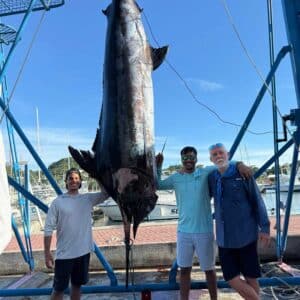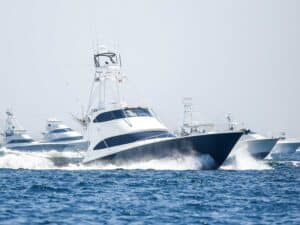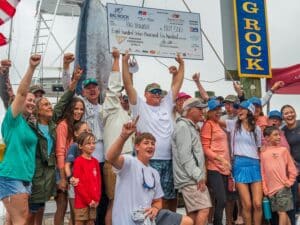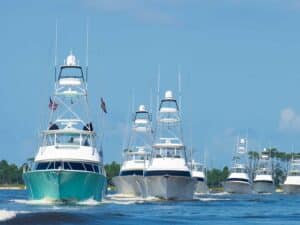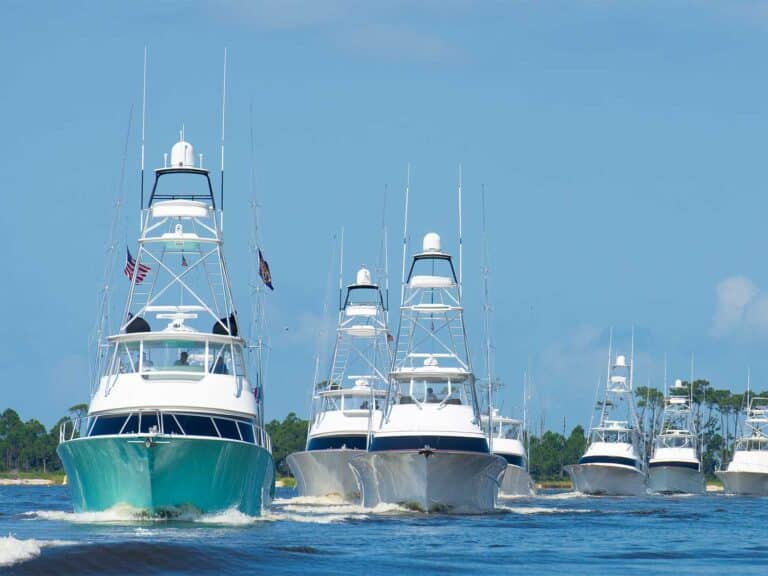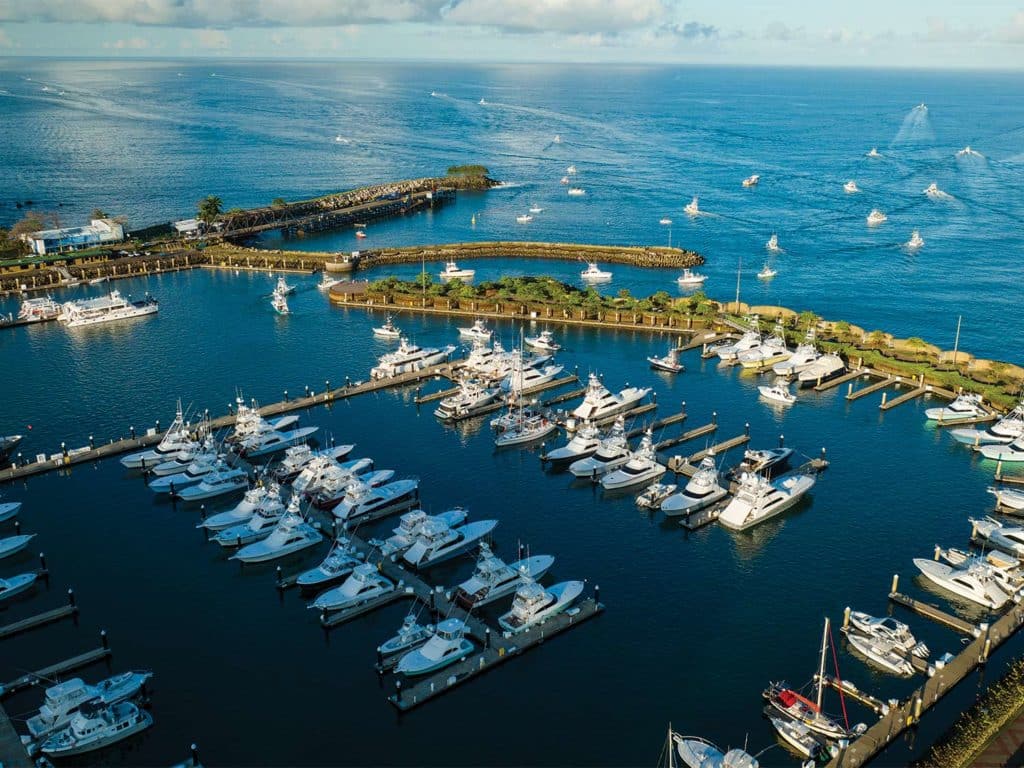
Special delivery: Sign up for the free Marlin email newsletter. Subscribe to Marlin magazine and get a year of highly collectible, keepsake editions – plus access to the digital edition and archives.
It’s better to be lucky than good; happy boats catch fish; we’re just here to have a good time—we’ve all heard the same old idioms about tournament fishing for years. But sometimes a story comes along that really highlights those sentiments.
The 2022 Costa Offshore World Championship, held in Quepos, Costa Rica, hosted 37 teams and 168 anglers from 18 different countries. It’s perhaps the most internationally diverse tournament of its kind in the world, and yet there’s not a dime of prize money to be won—it’s all for the prestigious title of Offshore World Champions (plus a boatload of trophies and prizes). Every team fishing had to earn the right to attend by winning a qualifying event in their home waters—never an easy feat. Most arrive in Costa Rica days in advance to pre-fish and get to know the waters off Quepos, lugging boxes of their own tackle down the docks of Marina Pez Vela—rod tubes and backpacks brimming with all the latest gear, reels carefully topped off with fresh line, game faces on and ready to go head-to-head with some of the best fishermen in the world.
And then there were the Kenyans. Team No. 33—Florian Biziere, Steve Harries and Geoff Bell—came to Costa Rica with the goal of having a good time and little else. With their wives in tow, they figured it would be a good way to meet some of their fellow international anglers and spread the word about the great fishing they have back at home in eastern Africa. They had qualified for the OWC by winning their largest local tournament, the 30-boat Watamu Fishing Festival. It was their first time in Central America and first time using the combination of light tackle, dead bait and circle hooks.
Watch: A belly-strip teaser is a great way to raise marlin and sailfish. Learn to rig one here.
“We don’t use light tackle at home,” says Biziere, who went on to explain that because Kenya has such a wide variety of billfish species—blues, blacks, stripes and sails, plus swordfish and the occasional spearfish—their local boats always fish with heavier gear. “We showed up ‘hands-in-pockets,’ no rods or tackle. We even had to buy a GoPro at the airport because we had forgotten to bring one with us,” he says. At the video-camera registration, the tournament staff was surprised that they had only one camera to record their releases because having multiple backups is always a good idea. The team also didn’t bother to pre-fish, choosing instead to go sightseeing around Quepos and visiting nearby Manuel Antonio National Park. “Our only goal for the tournament was to go fishing, drink a few beers, have a good time, and not finish last,” Biziere says with a smile.
The OWC format features a boat rotation, with teams fishing on a different Costa Rica-flagged charter boat for each of the four days of competition. Day One found the Kenyans on Muy Caliente, a red-hulled Bertram. By lines out, they had managed a respectable day, releasing two sailfish and two blue marlin—good for 1,400 points and 16th place overall.
With a better feel for the tackle and the fishing techniques, the trio set out on Super Fly, a 36-foot Maverick, the following morning. Another good day off Quepos netted the team an additional nine sailfish and a bonus blue marlin, enough to earn them the Costa top daily boat honors and their choice of new sunglasses from the event’s title sponsor. They were now sitting in fourth place overall, and the beers continued to flow freely that evening as the celebration continued. Goal No. 1 of having a good time? Check.
Day Three of the OWC has a way of shaking up the tournament leaderboard. The Kenyans set out aboard Sea Hawk, but after missing a few bites right away, the mood on board darkened. “Our captain was a bit grumpy with us,” Biziere admits. “We had been doing really well, but you know, it’s fishing—you’re not going to catch them all.” With only three sailfish releases for the day, they slipped a bit but were still holding in the top 10.
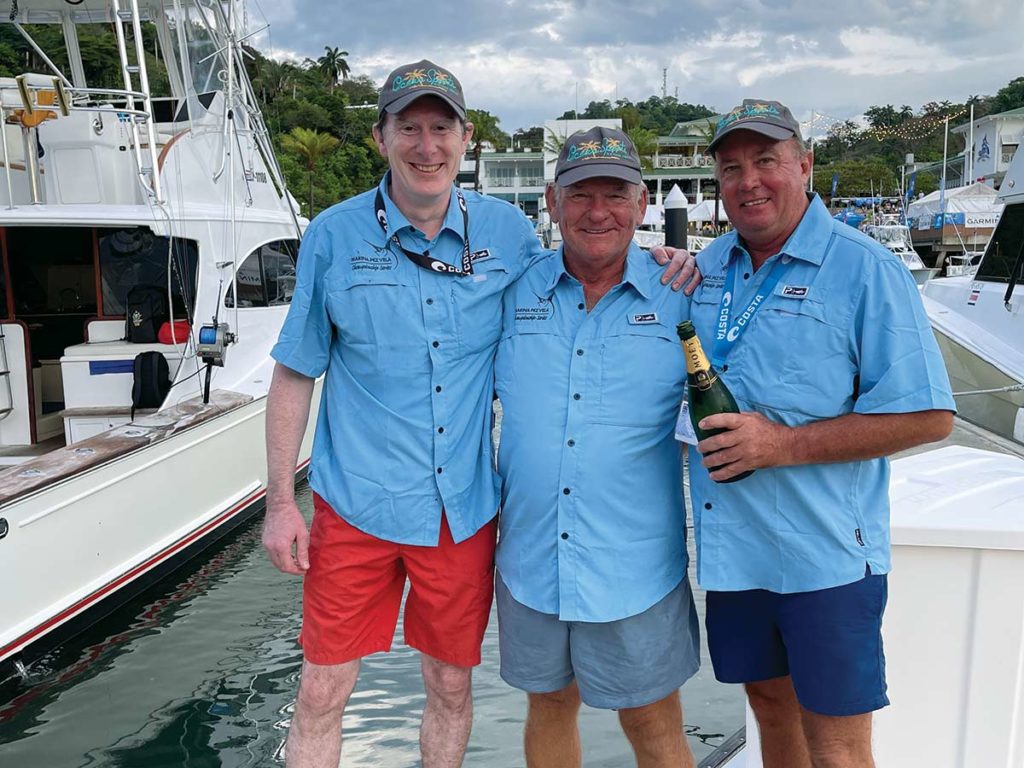
With nothing to lose on Day Four, they wandered down to the docks to head out on the final day, fishing on Fire Fly, a 42-foot Maverick. They were met by tournament director Dan Jacobs, who was slightly worried about the team—the time for departure had come and gone, and yet they were in no rush to leave the marina. “We talked with our captain, Franklin [Arrieta Jimenez], who said we could either head back out to where everyone else was fishing or we could try to find some on our own in a different direction,” Biziere says. “We decided that it sounded like a good plan to go off by ourselves, so that’s what we did.”
The call for lines in found them still on plane and running for about 40 miles, where Jimenez suddenly brought the boat to idle, reaching for his binoculars. “He had found a beautiful-looking rip that was loaded with birds and bait, so we put the lines in and started trolling toward it. Ten minutes later, we caught a blue marlin on a lure and knew we had found the right spot,” Biziere says. He released the first fish at 8:13 a.m., then Bell and Harries scored a doubleheader a few minutes later—three blue marlin releases in the first hour alone. The bite was on. “We decided that we would pull in the dredges and just pitch to fish on the teasers, which is something we do at home quite often,” Biziere says. “There were a lot of fish there. We missed a few and actually caught another marlin that didn’t count because we were all fighting fish and didn’t get it on video. It was just wide open for a few hours.” By 10:40 a.m. the bite had all but shut down—with just one more marlin coming after lunchtime—but the Kenyans had done their damage: eight video-verified blues for the day, 4,000 points on Day Four alone—a new one-day OWC record—and a total of 8,300 points for the tournament. It was a stunning come-from-behind win for perhaps the most unlikely team in the tournament field. Harries was named top angler for the tournament on time with six sails and five marlin, and Biziere was named second-place angler, also releasing six sails and five marlin.
Read Next: Learn more about the Costa Offshore World Championship, including how to qualify to participate.
“It really was a wonderful experience,” Biziere says. “The event was run exceptionally well, the boats were all very good, and the crews worked hard to make sure we had fun.”
As 2022 champions, the team has the opportunity to attend the Offshore World Championship for many years to come. They have no plans of changing their strategy though—they’ll come to fish and have a good time, although they’ll likely bring an additional GoPro next year.
